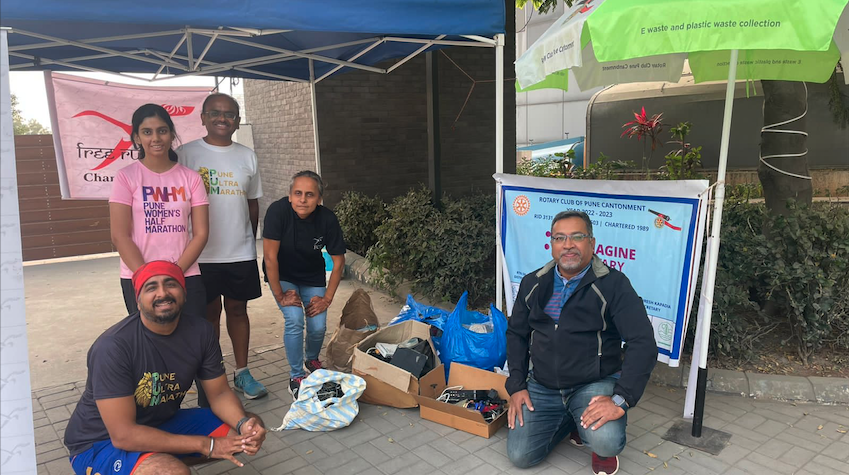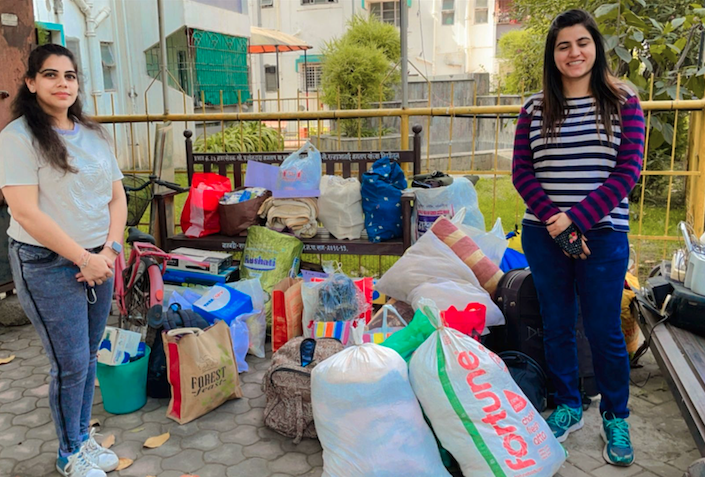Erase E-Waste
Regardless of culture, income, or customs, we have an ever-increasing heap of electric and electronic waste.

Location/Club: Rotary Club of Pune Cantonment, District 3131, Maharashtra, India
Regardless of culture, income, or customs, we have an ever-increasing heap of electric and electronic waste. In the last 10 years, e-Waste has become a global issue. Sadly, e-waste is something which does not get much media coverage, and people’s awareness is quite low. In India about 95 percent of electronic waste is treated and processed in urban slums, where untrained workers carry out practices unsafe for human and environmental health.
Description
The Rotary Club of Pune Cantonment sponsored an awareness campaign and collection.
1. Awareness Campaign
We created awareness on Sustainable living through Clean Environment Initiative amongst our club members. We listed what new initiatives can be taken up and explored the status of solid dry waste management, management feasibility, and legal compliances needed.
2. Collection Event
We held a collection event on the street.
3. Separate items
We separated items into those that could be fixed and recycled, and properly dispose of hazardous materials.
Whenever we think of waste, we think in terms of garbage or solid/semi-solid waste and not anything else. The lifestyle of the average individual has changed. We’ve embraced technology and gadgets in all their glory.
The result? An ever-increasing heap of e-waste, we find hard to manage. The digital revolution changed a lot for us, and our habits have been at the receiving end of this change too. Our spending and consuming habits have altered the way we use electronics and electrical equipment and for how long. Some of us ‘upgrade’ our smartphones twice every year. Just as you buy one, you get the itch to buy another (read, a better one). The substantial production of ELECTRIC & ELECTRONIC EQUIPMENT and its rapid disposal has become a grave concern all over the world. India is no different.
In India, a country marked by a diversity of culture, income, beliefs, and customs, the problem of e-waste management is, unfortunately, one of the few aspects that seem uniform, and it’s too complex to have a definite answer. e-Waste management is a critical issue crippling our nation. As if that wasn’t enough, we’re bogged down by yet another challenge – e-Waste treatment. About 95 percent of electronic waste in India is treated and processed in urban slums, where untrained workers carry out practices unsafe for human and environmental health.
In the last 10 years, e-Waste has become a Global issue. Sadly, e-waste is something which does not get much media coverage, and people’s awareness regarding e-waste is quite low.
Here’s what we did.
1. Awareness and collection
The Pune Cantonment Rotary Club started with creating awareness on Sustainable living through Clean Environment Initiative amongst our club members. We listed what new initiatives can be taken up, apart from the regular tree planting. We explored the status of solid dry waste management, management feasibility, and legal compliances needed. This involved the following steps.
- Create Awareness.
- Understand the local scenario of waste management.
- Understand the gaps in the process of waste management.
- Identify the Resources like Authorized waste collector or Recycler .
- Do Brainstorming to frame the Process of waste collection or Disposal.
- Check/Verify the Authenticity/ Credibility of Waste Handler.
- Check/Verify the Authenticity/ Credibility of Recycler.
- Check the Techno-feasibility of the Process for long term sustainability.
- Customize the solution as per local needs
We realized that the awareness of managing hazardous dry waste like e-waste is the lowest mode of disposal, and it is not easy. We took this opportunity to explore the possible connections for formal disposal and started working to create awareness amongst the general public. We initiated voluntary collection of e-Waste on the street level and handing it over to formal disposal through state authorized recyclers.
2. Separate items that could be fixed
We separated items that could be fixed like electric and electronic equipment. This included items which are not useful to owners because of irreparability, obsolete technology, damage, etc. We were careful to think of these principles.
- Reuse
- Repair to Reuse
- Reject to recycle
3. Separate items that could be put to reuse
We separated items and parts of items that could be reused like obsolete technology and lower architecture computers.
4. Separate items that couldn’t be recycled
These items can’t be recycled by the average user but can be recycled through a specific classified technology process by the Authorized Industry. The ultimate aim is to prevent letting low value waste or hazardous materials drain into rivers and bodies of water. We wanted to ensure it gets processed through technology in a closed environment to avoid the health hazard to working labor and polluting the surrounding environment. We wanted valuable metals to be extracted to save Natural Resources.
The complete project cycle leads to:
- Formal Disposal of Hazardous waste.
- Circular Sustainable Economy.
- Sustainable Environment.
- Conserve Resources.
- Spreads Literacy & Sustainable Living.


